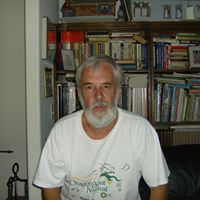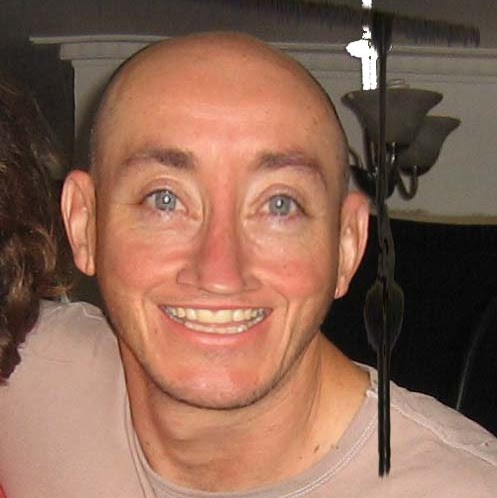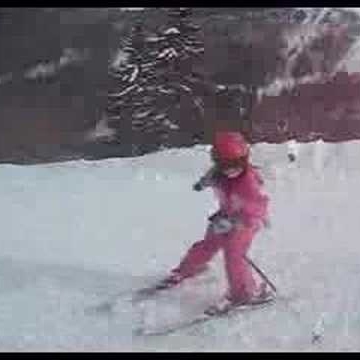Mark T Anders
age ~65
from Boca Raton, FL
- Also known as:
-
- Mark T Andres
Mark Anders Phones & Addresses
- Boca Raton, FL
- Nashville, TN
- 14 Glover St, San Francisco, CA 94109
- 8370 E Tailfeather Dr, Scottsdale, AZ 85255 • 4152691986
- Staten Island, NY
- Bellevue, WA
- Kirkland, WA
- Redmond, WA
Work
-
Company:Self employed
-
Position:Private consultant
Education
-
School / High School:William Paterson College- Wayne, NJ1983
-
Specialities:Communication and Media/Public Relations
Medicine Doctors

Mark J. Anders
view sourceSpecialties:
Orthopaedic Surgery
Work:
University Sports Medicine InstituteUBMD Orthopaedics & Sports Medicine
462 Grider St, Buffalo, NY 14215
7162043200 (phone), 7168985743 (fax)
University Sports Medicine InstituteUBMD Orthopaedics & Sports Medicine
5959 Big Tree Rd STE 108, Orchard Park, NY 14127
7168214400 (phone), 7168292138 (fax)
462 Grider St, Buffalo, NY 14215
7162043200 (phone), 7168985743 (fax)
University Sports Medicine InstituteUBMD Orthopaedics & Sports Medicine
5959 Big Tree Rd STE 108, Orchard Park, NY 14127
7168214400 (phone), 7168292138 (fax)
Education:
Medical School
University of Wisconsin Medical School
Graduated: 1986
University of Wisconsin Medical School
Graduated: 1986
Procedures:
Arthrocentesis
Hip/Femur Fractures and Dislocations
Knee Arthroscopy
Knee Replacement
Lower Arm/Elbow/Wrist Fractures and Dislocations
Lower Leg/Ankle Fractures and Dislocations
Shoulder Surgery
Carpal Tunnel Decompression
Hip Replacement
Wound Care
Hip/Femur Fractures and Dislocations
Knee Arthroscopy
Knee Replacement
Lower Arm/Elbow/Wrist Fractures and Dislocations
Lower Leg/Ankle Fractures and Dislocations
Shoulder Surgery
Carpal Tunnel Decompression
Hip Replacement
Wound Care
Conditions:
Internal Derangement of Knee Cartilage
Osteoarthritis
Fractures, Dislocations, Derangement, and Sprains
Internal Derangement of Knee
Internal Derangement of Knee Ligaments
Osteoarthritis
Fractures, Dislocations, Derangement, and Sprains
Internal Derangement of Knee
Internal Derangement of Knee Ligaments
Languages:
English
Description:
Dr. Anders graduated from the University of Wisconsin Medical School in 1986. He works in Buffalo, NY and 1 other location and specializes in Orthopaedic Surgery. Dr. Anders is affiliated with Buffalo General Medical Center, Erie County Medical Center, United Memorial Medical Center and Women & Childrens Hospital Of Buffalo.

Mark L. Anders
view sourceSpecialties:
Anesthesiology
Work:
Anesthesia AssociatesAnesthesia Associates Colorado Spring
1400 E Boulder St, Colorado Springs, CO 80909
7195205900 (phone), 7195205925 (fax)
Printer's Park OB/GYNMemorial Outpatient Surgery
175 S Un Blvd STE 100, Colorado Springs, CO 80910
7193657000 (phone), 7193656161 (fax)
1400 E Boulder St, Colorado Springs, CO 80909
7195205900 (phone), 7195205925 (fax)
Printer's Park OB/GYNMemorial Outpatient Surgery
175 S Un Blvd STE 100, Colorado Springs, CO 80910
7193657000 (phone), 7193656161 (fax)
Education:
Medical School
Wayne State University School of Medicine
Graduated: 1993
Wayne State University School of Medicine
Graduated: 1993
Languages:
English
Description:
Dr. Anders graduated from the Wayne State University School of Medicine in 1993. He works in Colorado Springs, CO and 1 other location and specializes in Anesthesiology. Dr. Anders is affiliated with Arkansas Valley Regional Medical Center, Memorial Hospital Central and Memorial Hospital North.
Name / Title
Company / Classification
Phones & Addresses
Manager
P1VOT LLC
#105-274, Scottsdale, AZ 85255
8370 E Tailfeather Dr, Scottsdale, AZ 85255
8370 E Tailfeather Dr, Scottsdale, AZ 85255
ANDERS CONSTRUCTION, INC
Collabra 48 LLC
Business Services at Non-Commercial Site
Business Services at Non-Commercial Site
2505 Eagle Run Dr, Fort Lauderdale, FL 33327
Associate Professor
The Trustees of Columbia University In The City of New York
Commercial Nonphysical Research College/University · Graduate School
Commercial Nonphysical Research College/University · Graduate School
61 Rte 9W, Palisades, NY 10964
8453658824, 8453592900
8453658824, 8453592900
President
Mark's Steakhouse, LLC
1513 Blue Jay Cir, Fort Lauderdale, FL 33327
President, Treasurer, Director, Secretary, Vice President
Manders Corp
Business Services at Non-Commercial Site
Business Services at Non-Commercial Site
1513 Blue Jay Cir, Fort Lauderdale, FL 33327
Resumes

Founder And Chief Executive Officer
view sourceLocation:
Nashville, TN
Industry:
Computer Software
Work:
P1Vot
Founder and Chief Executive Officer
Adobe Dec 2005 - Apr 2014
Fellow
Macromedia Aug 2004 - Dec 2005
Vice President of Engineering
Microsoft Mar 1995 - Aug 2004
Partner
Inmark Development Jan 1987 - Mar 1995
Co-Founder
Founder and Chief Executive Officer
Adobe Dec 2005 - Apr 2014
Fellow
Macromedia Aug 2004 - Dec 2005
Vice President of Engineering
Microsoft Mar 1995 - Aug 2004
Partner
Inmark Development Jan 1987 - Mar 1995
Co-Founder
Education:
New York University
Bachelors, Bachelor of Science, Computer Science
Bachelors, Bachelor of Science, Computer Science
Skills:
Strategic Planning
Product Design
Software Architecture
Software Development
Public Speaking
Product Design
Software Architecture
Software Development
Public Speaking

Mark Anders
view source
Mark Anders
view sourceSkills:
Microsoft Word
Financial Analysis
Powerpoint
Financial Analysis
Powerpoint

Mark Anders
view source
Mark Anders
view source
Mark Anders
view sourceLicense Records
Medical Doctor
License #:
36173 - Active
Issued Date:
Jun 19, 1997
Renew Date:
May 1, 2015
Expiration Date:
Apr 30, 2017
Type:
Physician
Us Patents
-
Hierarchical Clock Grid For On-Die Salphasic Clocking
view source -
US Patent:6522186, Feb 18, 2003
-
Filed:Jun 27, 2001
-
Appl. No.:09/893067
-
Inventors:Frank OMahony - San Carlos CA
Mark A. Anders - Hillsboro OR
Krishnamurthy Soumyanath - Portland OR -
Assignee:Intel Corporation - Santa Clara CA
-
International Classification:G06F 104
-
US Classification:327295, 327293, 327297
-
Abstract:A hierarchical clock distribution system includes a global clock grid that distributes a clock signal to a plurality of regional clock grids. Each of the regional clock grids then distributes the signal to a plurality of corresponding loads. The regional clock grids utilize salphasic clocking techniques to distribute the clock signal to the corresponding loads. The global grid achieves low skew based on the periodicity of the clock signal, rather than the dominance of a standing wave. The electrical distance to termination within the regional clock grids is preferably kept low to avoid the occurrence of phase change regions on the regional grids. In one approach, the regional grids are each driven at multiple points in a symmetrical fashion to reduce the electrical distance to termination.
-
Low Loss Interconnect Structure For Use In Microelectronic Circuits
view source -
US Patent:6909127, Jun 21, 2005
-
Filed:Jun 27, 2001
-
Appl. No.:09/893023
-
Inventors:Frank O'Mahony - San Carlos CA, US
Mark A. Anders - Hillsboro OR, US
Krishnamurthy Soumyanath - Portland OR, US -
Assignee:Intel Corporation - Santa Clara CA
-
International Classification:H01L027/10
-
US Classification:257208, 257776, 327295
-
Abstract:A low loss on-die interconnect structure includes first and second differential signal lines on one of the metal layers of a microelectronic die. One or more traces may also be provided on another metal layer of the die that are non-parallel (e. g. , orthogonal) to the differential signal lines. Because the traces are non-parallel, they provide a relatively high impedance return path for signals on the differential signal lines. Thus, a signal return path through the opposite differential line predominates for the signals on the differential lines. In one application, the low loss interconnect structure is used within an on-die salphasic clock distribution network.
-
Adjustable Locking Strap Apparatus
view source -
US Patent:6993942, Feb 7, 2006
-
Filed:Nov 14, 2002
-
Appl. No.:10/295020
-
Inventors:Christopher Boni - Livingston NJ, US
Mark Anders - Providence RI, US -
International Classification:E05B 73/00
-
US Classification:70 18, 70 14, 70 57
-
Abstract:An adjustable locking strap apparatus for locking an elongate object includes a first loop, a second loop, and an adjustable strap extending therebetween. The loops can be fit about ends of the elongate object. One loop could be adjusted adjusted for proper size. The strap extending between the loops can be adjusted between the loops so that when the first and second loops are positioned about the elongate object, the strap is sized to prevent either loop from being removed from the object. A lock is interconnected with the adjustable loop and strap for securing the size of the adjustable loop and strap. A tether portion can secure the locking strap to a fixed object. A stopper on the tether can be positioned within a car, and the window rolled up to retain the locking strap within a car. In other embodiments, two straps with loops at one end and stoppers at the other end can used. One loop is positioned about an end of the elongate object and the strap is retained in a housing.
-
Low Loss Interconnect Structure For Use In Microelectronic Circuits
view source -
US Patent:7352059, Apr 1, 2008
-
Filed:Jun 14, 2005
-
Appl. No.:11/152643
-
Inventors:Frank O'Mahony - San Carlos CA, US
Mark A. Anders - Hillsboro OR, US
Krishnamurthy Soumyanath - Portland OR, US -
Assignee:Intel Corporation - Santa Clara CA
-
International Classification:H01L 27/10
H01L 23/52
H01L 23/522
H01R 12/00 -
US Classification:257691, 257E23144, 257208, 257758, 257775, 257776, 257664, 257211, 257E23011, 439 65, 327295
-
Abstract:A low loss on-die interconnect structure includes first and second differential signal lines on one of the metal layers of a microelectronic die. One or more traces may also be provided on another metal layer of the die that are non-parallel (e. g. , orthogonal) to the differential signal lines. Because the traces are non-parallel, they provide a relatively high impedance return path for signals on the differential signal lines. Thus, a signal return path through the opposite differential line predominates for the signals on the differential lines. In one application, the low loss interconnect structure is used within an on-die salphasic clock distribution network.
-
Exposing Rich Internet Application Content To Search Engines
view source -
US Patent:7707152, Apr 27, 2010
-
Filed:Jul 29, 2005
-
Appl. No.:11/192985
-
Inventors:Eliot Greenfield - Oakland CA, US
Mark Anders - San Francisco CA, US
Sho Kuwamoto - San Francisco CA, US
Todd Rein - San Francisco CA, US -
Assignee:Adobe Systems Incorporated - San Jose CA
-
International Classification:G06F 7/00
G06F 17/00 -
US Classification:707100, 707 1, 707 3, 7071041
-
Abstract:Systems and methods which facilitate search engine discovery of and/or access to application program content are shown. Declarative code may be provided within the procedural code of a rich Internet application in order to identify various states, and their associated content, of the rich Internet application. A Web crawler may identify content associated with a rich Internet application using the foregoing information. Likewise, direct access to rich Internet application states associated with the identified content may be provided using the foregoing information. A translation module may be provided for interfacing between a Web crawler and a rich Internet application. Such a translation module may interact with the Web crawler to respond to Web crawler navigation instructions and access declarative code associated with different states of the rich Internet application, providing responsive information identifying content in a structure that is compatible with a search engine associated with the Web crawler.
-
Localized Exploded View
view source -
US Patent:7945863, May 17, 2011
-
Filed:Jul 5, 2005
-
Appl. No.:11/175114
-
Inventors:Dexter Reid - San Francisco CA, US
Narciso B. Jaramillo - San Francisco CA, US
Mark Anders - San Francisco CA, US -
Assignee:Adobe Systems Incorporated - San Jose CA
-
International Classification:G06F 3/048
G06F 3/00
G09G 5/00 -
US Classification:715797, 715762, 715763, 715767, 345651, 345660, 345665, 345671
-
Abstract:A method for providing an Integrated Development Environment comprises receiving input from a user identifying an area containing an edge shared by two or more objects, wherein the shared edge includes two or more individual edges corresponding to the objects, and visibly separating the two or more individual edges in a localized exploded view responsive to the receiving.
-
Systems And Methods For Specifying States Within Imperative Code
view source -
US Patent:7949991, May 24, 2011
-
Filed:Jul 29, 2005
-
Appl. No.:11/194118
-
Inventors:Sho Kuwamoto - San Francisco CA, US
Eliot Greenfield - Oakland CA, US
Mark Anders - San Francisco CA, US -
Assignee:Adobe Systems Incorporated - San Jose CA
-
International Classification:G06F 9/44
-
US Classification:717100
-
Abstract:Systems and methods which implement declarative language for specifying states within imperative code are shown. According to embodiments an application program developer declaratively identifies one or more states within the imperative code of the application program. Declarative language identifying a particular state of an application program may both operate to identify the state and to describe the state so that the state may be selected or “jumped to” without a user having to navigate the application program flow to arrive at the state. Particular states may be described using a difference or “delta” between the particular state and another state, such as a base state. Transitions may be implemented between states, such as to provide animation, fading, color change, et cetera.
-
Exposing Rich Internet Application Content To Search Engines
view source -
US Patent:8280884, Oct 2, 2012
-
Filed:Mar 3, 2010
-
Appl. No.:12/716390
-
Inventors:Eliot Greenfield - Oakland CA, US
Mark Anders - San Francisco CA, US
Sho Kuwamoto - San Francisco CA, US
Todd Rein - San Francisco CA, US -
Assignee:Adobe Systems Incorporated - San Jose CA
-
International Classification:G06F 7/00
G06F 17/30 -
US Classification:707736, 707721, 707754, 707767
-
Abstract:Systems and methods which facilitate search engine discovery of and/or access to application program content are shown. Declarative code may be provided within the procedural code of a rich Internet application in order to identify various states, and their associated content, of the rich Internet application. A Web crawler may identify content associated with a rich Internet application using the foregoing information. Likewise, direct access to rich Internet application states associated with the identified content may be provided using the foregoing information. A translation module may be provided for interfacing between a Web crawler and a rich Internet application. Such a translation module may interact with the Web crawler to respond to Web crawler navigation instructions and access declarative code associated with different states of the rich Internet application, providing responsive information identifying content in a structure that is compatible with a search engine associated with the Web crawler.
News

Adobe sharpens Edge for advanced HTML
view source- "Interactivity is the most requested functionality thus far," said Mark Anders, the Adobe fellow who leads the Edge project. With it, Edge changes from a tool that essentially spruces up a page as it loads into one that changes as people use it.
- Date: Oct 05, 2011
- Category: Sci/Tech
- Source: Google

Mark Anders
view source
Mark Anders
view source
Mark Anders
view source
Mark Dennis Anders
view source
Mark Anders
view source
Mark Anders Lepik
view source
Mark Anders
view source
Mark Anders
view sourceYoutube
Plaxo

Mark Anders
view sourceForklift Associates
Classmates

Mark Anders
view sourceSchools:
Ouachita Christian High School Monroe LA 1984-1987
Community:
Paul Crews, Jason Stamper

Mark Anders
view sourceSchools:
Weimar High School Weimar TX 1969-1973
Community:
Amy Alford, Irma Rosales, Eugene Rhemann

Mark Anders
view sourceSchools:
John S. Irwin Elementary School Ft. Wayne IN 1966-1968, Will Beckley Elementary School Las Vegas NV 1968-1969, Saint Anne School Las Vegas NV 1969-1974
Community:
Dennis Brough, Cricket Lopuch

Mark Anders
view sourceSchools:
Mayo High School Rochester MN 1976-1980
Community:
William Blanchard, James Allhiser, Sharon Anderson, Dan Vagt, Arnold Olson, Troy Schliem, Michael Brotherton, Cheryl Earles, Todd Hein, Holly Brandt, Peggy Braun

Mark Anders, T.S.U | Hous...
view source
Weimar High School, Weima...
view sourceGraduates:
Mark Anders (1969-1973),
Paul Rodgers (1970-1974),
Joe Mayorga (1980-1984),
Diane Arnold (1979-1983),
Anniken Skagseth (2000-2004)
Paul Rodgers (1970-1974),
Joe Mayorga (1980-1984),
Diane Arnold (1979-1983),
Anniken Skagseth (2000-2004)
Myspace
Flickr
Googleplus

Mark Anders
Work:
UTSA - Laser Cutter Technician (2011-2012)
Education:
University of Texas at San Antonio - Architecture

Mark Anders
About:
Retired bank CEO from Maryland
Tagline:
Living the Life in Hilton Head
Bragging Rights:
Father of two great kids, Hanns and Kendell.

Mark Anders
Bragging Rights:
Perfect score (800) on math SAT! Have been to all 50 states

Mark Anders

Mark Anders

Mark Anders

Mark Anders

Mark Anders
Get Report for Mark T Anders from Boca Raton, FL, age ~65

















